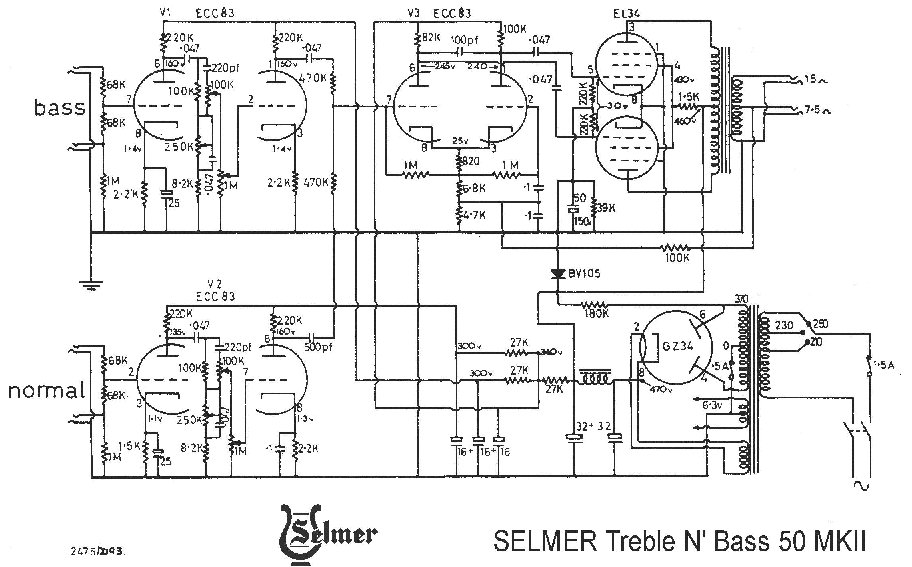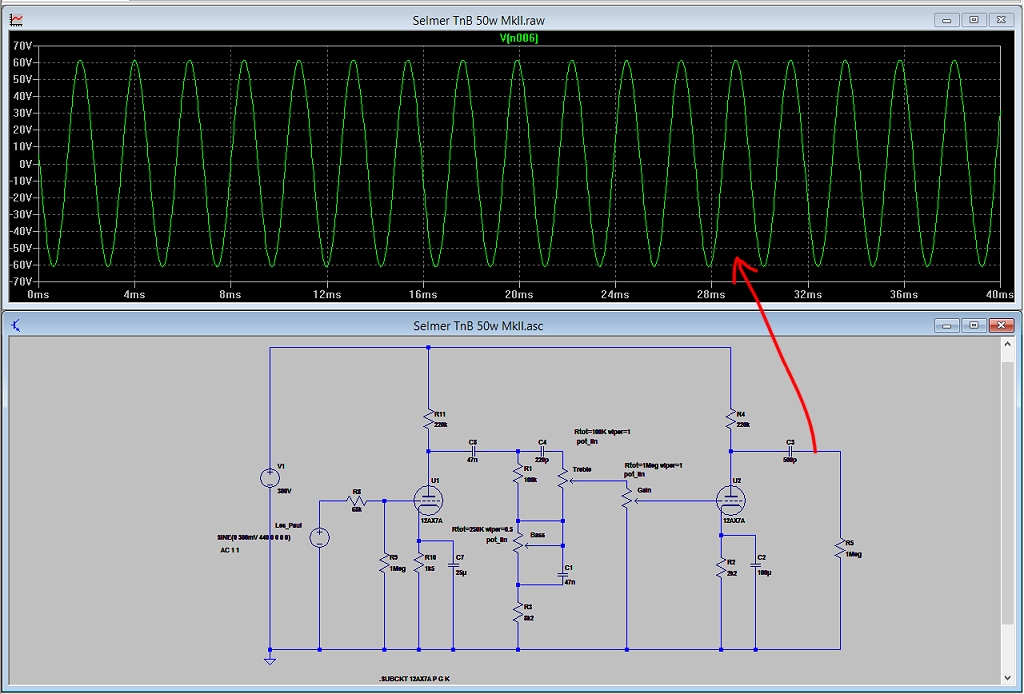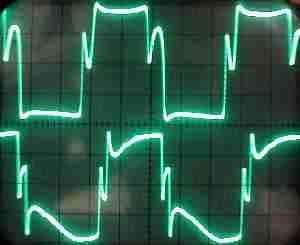Hi guys, i am new to tube amps and i am trying to analyze the famous Selmer Treble and Bass 50W MkII (Syd barrett, paul McCartney, ...).
Here is the schematics:

It has separate preamps for each input mixed to the power amp via two 470k resistors.
I thought the distortion is created in the preamp, but the LT Spice simulation shows otherwise ...
I simulate the guitar signal by 300mV, 440Hz sinus.
The first stage boosts it to 13V, then the filter stage takes it down to 1V and the last stage up to 60V amplitude.
The anode of the last stage is sitting on 160VDC and the clean signal swings around.

Can you please tell me where is the distortion created?
Here is the sound
Here is the schematics:

It has separate preamps for each input mixed to the power amp via two 470k resistors.
I thought the distortion is created in the preamp, but the LT Spice simulation shows otherwise ...
I simulate the guitar signal by 300mV, 440Hz sinus.
The first stage boosts it to 13V, then the filter stage takes it down to 1V and the last stage up to 60V amplitude.
The anode of the last stage is sitting on 160VDC and the clean signal swings around.

Can you please tell me where is the distortion created?
Here is the sound




Comment